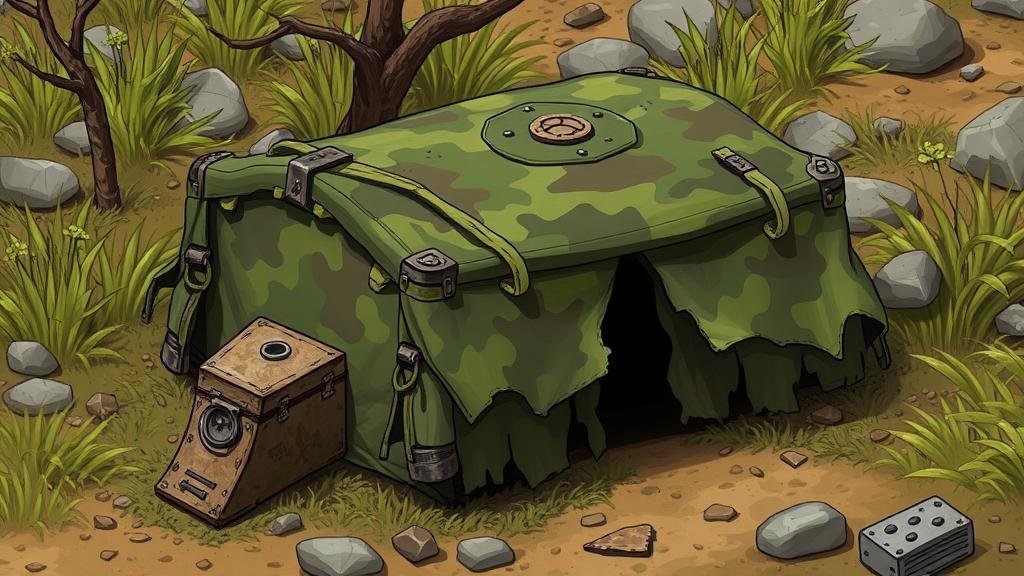The Use of Camouflage to Conceal Traps in Treasure Locations
The Use of Camouflage to Conceal Traps in Treasure Locations
Camouflage is a critical strategy employed in various fields, including military tactics, wildlife studies, and, notably, treasure hunting. When it comes to setting traps at treasure locations, the application of camouflage becomes vital for effective concealment. This article delves into the techniques used to camouflage traps, explores the psychology behind it, examines historical examples, and discusses best practices for modern treasure hunters.
Understanding Camouflage in Trap Concealment
Camouflage is defined as the method of blending an object into its surroundings to avoid detection. In the context of concealing traps, it involves utilizing materials and techniques to obscure traps from the eyes of potential treasure seekers, wildlife, or even authorities. The effectiveness of camouflage is heightened through the understanding of the environment, including colors, patterns, and natural textures.
The concept can be likened to how certain animals adapt to their habitats; for instance, the Arctic fox changes its fur coloration with the seasons to blend into snowy landscapes during winter and rocky terrains in summer. Similarly, traps must blend seamlessly into their environments, employing similar principles of natural adaptation.
Types of Camouflage Techniques
Various types of camouflage techniques can be adopted when designing and setting traps at treasure locations. Below are some key methods:
- Natural Materials: Utilizing sticks, leaves, and dirt that mimic the existing environment helps to disguise traps effectively.
- Color Matching: Selecting paints or coatings that match the local flora can aid in blending traps with the surrounding landscape.
- Disruption Patterns: Creating patterns that disrupt the form of the trap can confuse the observer, such as using netting with a break-up pattern.
Case Studies of Successful Camouflage
Historically, several treasure hunters have used effective camouflage techniques with great success. One well-known case is the legendary treasure of the Spanish galleons, which were often buried in remote locations across the Caribbean. Piracy in the 17th century led to treasures being buried and traps set around them. Pirates would use local vegetation to disguise their trap mechanisms, integrating them into the landscape.
A similar example can be found in modern treasure hunting, as seen in the rise of amateur treasure seekers during the pandemic. Many employed DIY techniques to camouflage their traps, utilizing local materials to obscure digging sites to avoid detection by property owners or law enforcement. For example, the popular “Fenn Treasure†hunt involved numerous treasure seekers camouflaging their digging locations under foliage.
Psychological Aspects of Camouflaging Traps
Understanding the psychology of observation plays a significant role in the effectiveness of camouflage. Humans naturally scan their environment for visual cues. Traps that incorporate elements of surprise–by appearing less like traps and more like ordinary terrain–are often overlooked. The human eye tends to focus on movement or contrasting colors; thus, a trap that avoids these can remain hidden.
Best Practices for Modern Treasure Hunters
For those interested in utilizing camouflage when setting traps, adhering to best practices is essential:
- Know Your Environment: Evaluate the locales flora and fauna to select appropriate materials that ensure effective camouflage.
- Avoid Synthetic Materials: Whenever possible, use organic items that will naturally blend into the environment.
- Periodic Review: Reassess the area after setting traps to ensure that no changes in the environment–like wind or rain–have exposed them.
Conclusion and Actionable Takeaways
To wrap up, the use of camouflage is a vital skill for anyone interested in treasure hunting and trap concealment. By understanding and implementing the techniques of natural materials, color matching, and disruption patterns, treasure seekers can enhance their effectiveness and ensure the security of their treasures. Historical examples illustrate the successful application of these strategies, while psychological insights provide deeper understanding of human observation.
As a next step, treasure hunters should practice their camouflage skills in diverse environments, learning to adapt their methods to different terrains. Continual learning and adaptation are crucial in navigating the complexities of treasure hunting and trap concealment.



